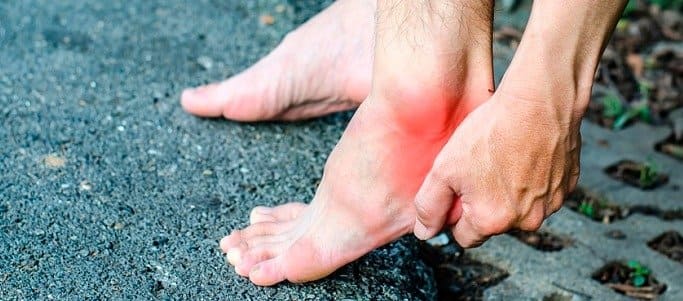Plantar fascia is a broad strip of connective tissues at the bottom of the foot. It is thicker and stronger towards the toes and gets thinner and weaker towards the heel. Due to this structure, the foot is more susceptible to inflammation, tearing, and micro-trauma at the heel which results in pain and irritation. If this disorder is not treated, it becomes chronic, and the plantar fascia begins to degenerate.More stress is placed on the plantar especially when a person is running. Irritation in the plantar takes a lot of time to settle down due to the endless stress placed on it during the everyday activities. In addition, the plantar lacks sufficient blood supply which slows down the healing process.
Getting the inflammation and pain under control is the first you should take when treating the stress in the plantar. This can be achieved by using anti-inflammatories and non-steroidal such as naproxen sodium and ibuprofen. Icing can also be of great help. During this period, you are advised to stretch the hamstring and the calf.It is not advisable to stretch the foot to a point where it hurts in the plantar. Staying away from high heels, uncomfortable, and ill-fitted shoes will accelerate your healing process.
1. Stretches
This plantar fasciitis exercise should be completed 2-3 times a day when treating the condition. When performing the stretch, you should slowly stretch and hold until you feel the connective tissues release. This takes place between 15-45 seconds. You should not hold the stretch for more than 60 seconds. Uncomfortable stretches are also okay, as long as they do not cause irritation and pain during or after the stretch.
a. Hamstring rotational stretch
This is a plantar fasciitis exercise where you place the foot on raised surface that is below the waist as you stand on the other foot. Facing forward, keep the raised leg straight and avoid locking the other knee. After this, you lean forward from the waist and maintaining the back straight until you feel a calming stretch down the posterior side of the thigh. Rotate the torso right and then left such that you are alternately facing the inside and the outside part of your leg. Hold at the position where you feel more restrictions. Point the toes towards and away from your head and so as to modify the stretch.
b. Calf stretch
Adjust the distance from the wall according to your height. Bend the knee adjacent to the wall and allow your pelvis to shift forward. The stretch will be on the wall further from the wall.
c. Foot Stretch
Put the toes up against a wall. The heel should be on the floor. Roll the foot in and out ensuring the heel and the ball of the foot remain intact with the ground. Hold at the positions where you feel more strain. You can advance the stretch by straightening and bending the knee.
2. Strength plantar fasciitis exercises
These exercises are precisely designed to toughen the muscles in the ankle and the foot. By toughening these muscles, it will help to reduce stress in the plantar fascia. These exercises should not irritate the plantar fascia. In the case of irritation, the exercises should be stopped immediately. Strength plantar fasciitis exercise is divided into three levels.
a. Toe walking
Retain the upper body erect and fold your hands behind the low back. As the left foot lands down, let the heel come as close as possible to the ground without touching it and then rise up as high as possible on your toes. Take short steps and walk for about 15 meters with toes pointed straight ahead. Repeat the procedure with the toes tilted at about 30 degrees.
b. Heel walking
Stand upright and lift the toes as high as possible above the ground. Take short steps on your heels. The toes should not come to contact with the ground during the entire process.
II. Intermediate plantar fasciitis exercise
A. Ankle inversion using rubber
Start with the foot pointed up and out and the rubber band pulling up and out in a similar direction. Turn the foot down and inwards slowly against the resistance of the band. The inward and downward motion should two seconds. Let the foot return up and out to the initial position.This motion should take a maximum of five seconds.
The other intermediate exercise is ankle drops whereby you stand on the toes with the heels over the edge of a ledge or a stair and hold at the position where there is more strain for five seconds.
III. Advanced plantar fasciitis exercise
Exercises under this level are toe hopping and low box hops.
Plantar fasciitis is quite common among runners. It is caused by structural/biomechanical factors and training factors. However, you do not have to worry as the plantar exercises outlined above will help you take the stress of the plantar fascia.


























































